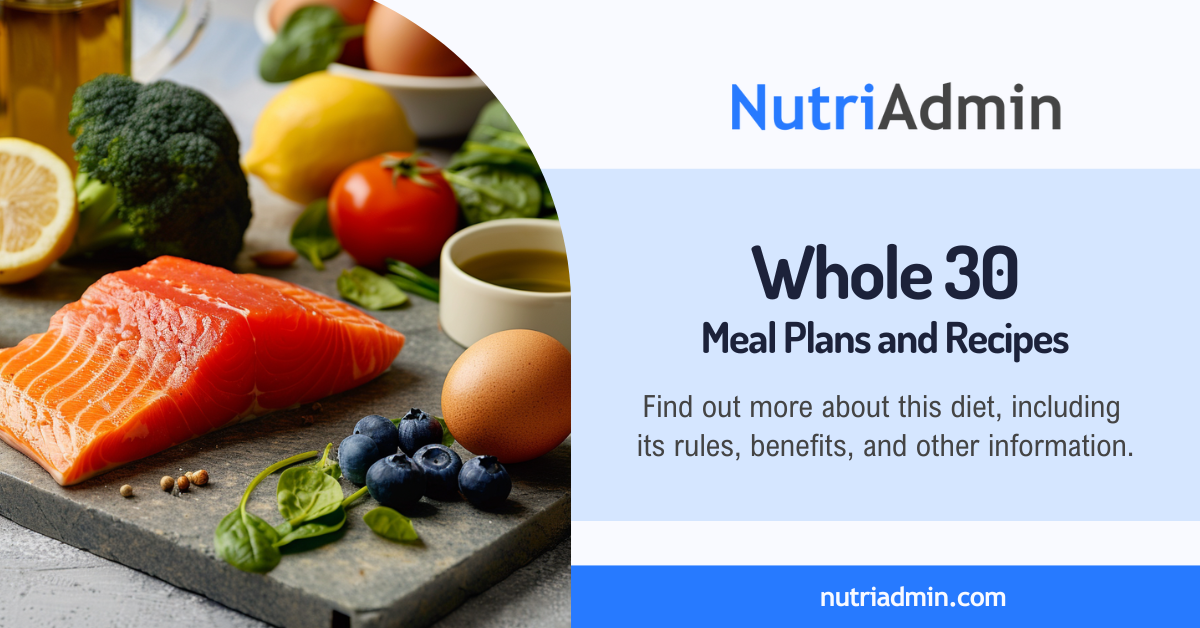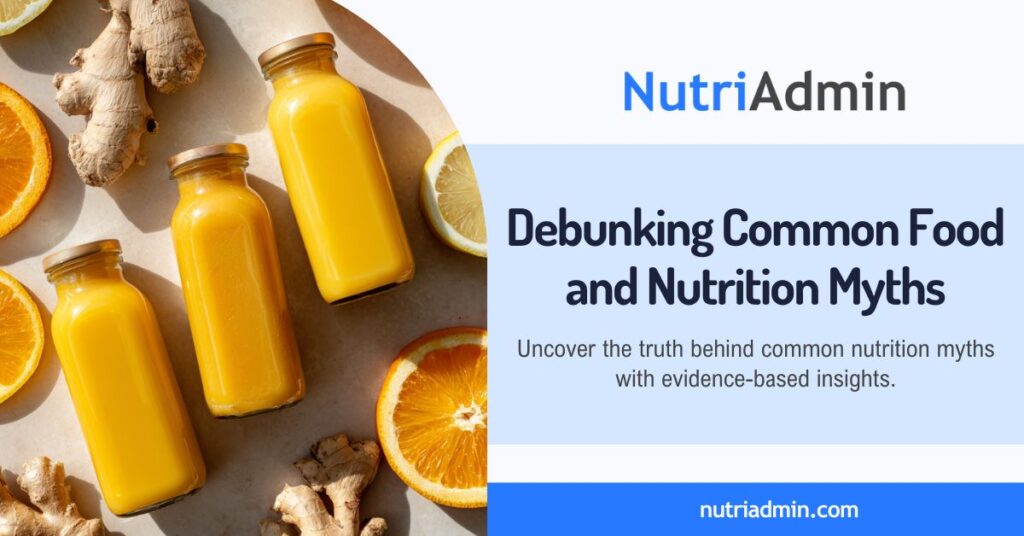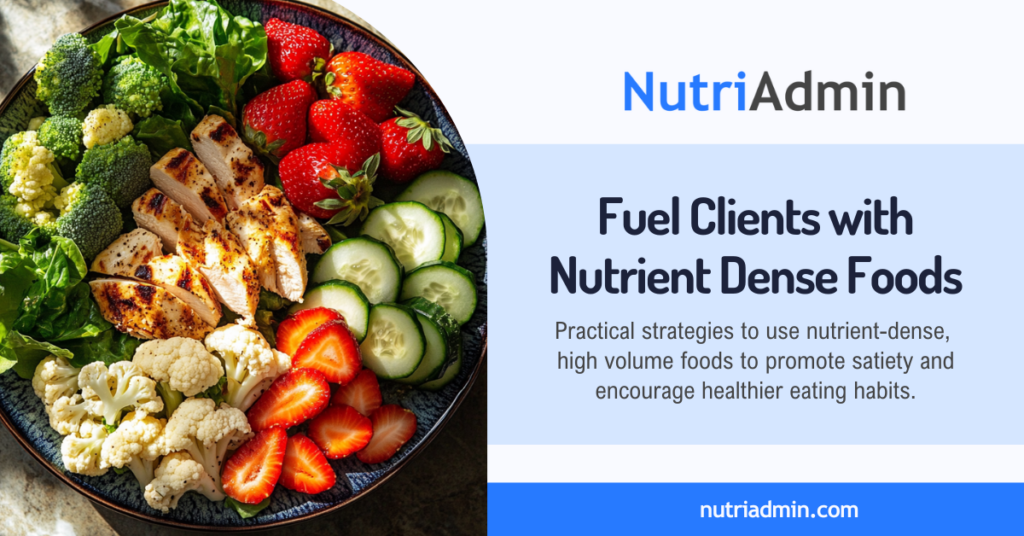Are you curious about this dietary reset program that has gained popularity for its emphasis on whole foods and elimination of processed foods, sugar, alcohol, grains, legumes, and dairy? In this article about the Whole 30 program, we will explain the rules of Whole30 and provide a comprehensive food list, meal plans, and recipes.
People who have tried this diet have been praising it for its numerous benefits. However, the question remains: are the benefits as good as they sound?
Is it a diet that you can confidently recommend to your clients?
What is Whole 30?
The Whole30 is a short-term elimination diet and reintroduction program created by Melissa Urban and Dallas Hartwig in 2009 designed to “change your life.”
This approach involves cutting out specific foods, especially those known to cause cravings and affect blood sugar, hormones, digestion, the immune system, and inflammation. It also emphasizes the importance of consuming whole foods.
Whole30 aims to identify food sensitivities, develop new habits to manage stress and negative emotions, and reestablish a healthy relationship with food.
Whole 30 Rules
In the initial 30-day period, you will remove specific foods from your diet. After this phase, you will gradually reintroduce these foods over a period of 10 days or longer.
Whole30 Elimination
During the first phase of the Whole30 program, you must eliminate certain food and beverage groups for 30 days.
List of Foods to Avoid: Whole 30 Elimination Phase
- Added sugar or artificial sweeteners
- Alcohol
- Grains
- Legumes
- Dairy
- Baked goods, pasta, cereal, chips, and fries
Exceptions
- Fruit juice
- Green beans
- Sugar snap, snow, green, yellow, and split peas
- Ghee or clarified butter
- Coconut aminos
- Vanilla, lemon, lavender extract, and other alcohol-based botanical extracts
- Champagne, red wine, sherry, white wine, or rice vinegar
- Iodized salt
The Pancake Rule in Whole 30
In the Whole30 program, you cannot consume baked goods, such as pancakes, waffles, tortillas, pizza crust, pasta, or noodles, even if they are made from flour derived from approved ingredients. For example, while almond flour is allowed, you cannot use it to make cookies. Instead, it can be used to dredge chicken or thicken a sauce or stew.
Following the Pancake Rule in Whole30 implies that it will be more difficult to curb cravings and alter habits if you consume foods throughout the entire 30 days that closely resemble the familiar comfort foods you typically rely on in terms of appearance, taste, and aroma.
Weighing and Measuring is Not Allowed
In the Whole30 program, participants are not allowed to weigh themselves, take body measurements, or analyze body fat percentages. This Whole30 rule aims to shift the focus away from specific numbers and instead encourage non-scale victories and overall health and well-being.
Whole30 Reintroduction
After removing these food groups from your diet, you will gradually add them back one at a time in a span of 10 days or more. Between reintroducing each group, you will return to the elimination phase for 2-3 days. Foods will be reintroduced, starting with the least likely to cause issues and progressing to the most likely.
- Added sugar (optional)
- Legumes
- Non-gluten grains
- Dairy
- Gluten-containing grains
- Alcohol (optional)
Benefits of Whole30
According to Whole30’s official website, it can help you achieve important goals:
- Identify the food sensitivities that affect your energy, sleep, digestion, mood, cravings, pain, and other symptoms.
- Develop new strategies for coping with stress, discomfort, and negative emotions.
- Reduce cravings, reconnect with your body, and trust your body’s signals to reestablish a healthy relationship with food.
Disadvantages of Whole30
Some individuals may find the strict dietary restrictions challenging to follow, especially in social settings or when dining out. Additionally, eliminating entire food groups such as grains, legumes, and dairy could lead to potential nutrient deficiencies if not carefully planned and monitored.
Furthermore, some people may experience initial discomfort or withdrawal symptoms as their bodies adjust to the elimination of certain foods, which could impact their energy levels and mood during the first phase of the program.
Lastly, for those with a history of disordered eating or a vulnerable relationship with food, the strict rules of Whole30 could potentially trigger negative psychological responses.
Positive and promising testimonials from Whole30 supporters are good, but it’s important to approach them with critical thinking due to potential bias. While the Whole30 program claims to offer many health benefits, there is no formal evidence-based research supporting these claims.
Before recommending Whole30 to your clients, it is important to consult a healthcare professional or a dietitian to ensure that the dietary reset is safe and suitable for their specific health conditions.
Planning a Whole 30 Meal Plan
During the elimination phase of the Whole 30 program, many food items are not allowed, so it’s important to plan meals in advance.
Planning meals ahead while on the Whole 30 program can help you stay on track and avoid the temptation of consuming non-compliant foods. It also ensures that you have access to allowed ingredients and helps you save time and effort during busy days. Additionally, meal planning gives you the opportunity to create balanced and nutritious meals, contributing to your overall success in the program.
Key Components: Whole 30 Meal Plan Food List
To create a Whole 30 meal plan, knowing what can be included is important. This can help in formulating meal ideas or creating recipes suitable for a Whole 30 meal plan.
Below is a Whole 30 food list that you can refer to. While it is not comprehensive, it can still be a helpful guide. When in doubt, you can always refer to the Whole30 official website.

Protein
When selecting items, it is best to look for products that have labels such as Whole30 Approved or contain terms like 100% grass-fed, pastured, wild-caught, and organic. Grass-fed or organic items may be more expensive, but it’s okay to choose more affordable options if they’re not within your budget.
Carbohydrates
The elimination phase of the Whole30 program does not allow common carbohydrates such as grains, bread, and pasta. Instead, you can consume root crops like potatoes, sweet potatoes, cassava, yams, and other vegetables.
Fats and Oils
During the Whole30 elimination phase, the restrictions on fats and oils are not as strict as those on protein and carbohydrates. You can consume most types of fats and oils, including olive oil, coconut oil, sunflower oil, lard, tallow, nuts, and seeds.
The Whole30 rules exclude dairy-based fats such as butter and cream but allow ghee and clarified butter.
Whole 30 Sample Meal Plan
If you follow the Whole 30 program or recommend it to your clients as a nutritionist, personal trainer, or coach, you can use the 1-week meal plan with recipes PDF below from NutriAdmin’s automatic meal planner.
NutriAdmin is nutrition software with a meal plan generator feature, making it an efficient tool for nutrition and fitness professionals who need to create many personalized Whole 30 meal plans for their clients quickly.
The software allows users to set parameters such as calories, macros, meal types, maximum ready time, diet type (including Whole30), exclude specific ingredients, and more. This functionality allows users to create tailored meal plans in just 60 seconds!
Whole 30 Recipes
Do you need easy, nutritious, and delicious recipes to keep you or your clients full during the Whole 30 elimination phase? In addition to the meal plan generator, NutriAdmin provides access to a nutritionist-vetted recipes database, offering thousands of options to choose from.
Feel free to use the following sample NutriAdmin recipes to create meal plans that are in line with the Whole30 program.
Summary
The Whole30 program is a 30-day elimination diet designed to identify food sensitivities and improve overall health. The main Whole30 rules include eliminating added sugar, alcohol, grains, legumes, and dairy for 30 days. The Whole 30 food list emphasizes whole, unprocessed foods like meats, seafood, eggs, vegetables, fruits, and healthy fats.
A Whole 30 meal plan or recipe should include these approved foods while avoiding restricted items. Whole 30 recipes should focus on simple, whole-food ingredients that adhere to the program’s guidelines. The program also includes specific rules like the Pancake Rule, which prohibits recreating treats such as baked goods and pasta with approved ingredients.
After the elimination phase, a structured reintroduction phase follows. While Whole30 can offer benefits like identifying food sensitivities and breaking unhealthy habits, it may also present challenges such as potential nutrient deficiencies due to the restriction of major food groups. Because of its strict rules, it is also not suited for people with a history of disordered eating.




